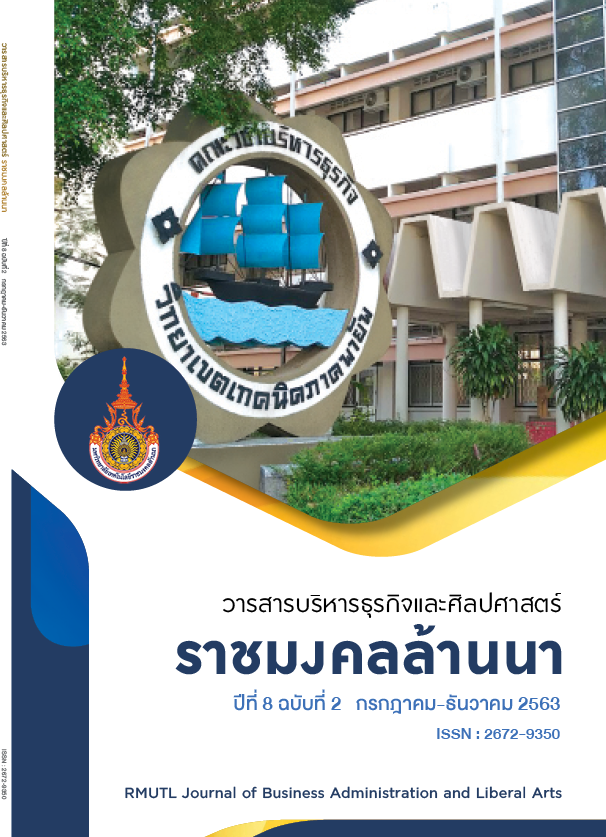Influence of factors affecting English communication with motivation as a central variable and anxiety as a controlling variable
Main Article Content
Abstract
The purpose of this research were 1. To study the influence of factors in English communication, practicing in English, basic knowledge of English, Strategic factors for learning English, Personal attitudes towards English that affect English communication of undergraduate students in Chonburi province 2. To study that motivation is a mediator variable between the factors of English learning strategies and English communication. 3. To study that anxiety is a controlling variable between motivation in learning English and English communication. The sample group used in this research was 385 undergraduate students in Chonburi province.
From the results and hypothesis testing, it was found that the factors of English practice, basic knowledge of English, learning strategies and personal attitudes towards English had a direct effect on English communication. In addition, from the analysis of relationships, the results demonstrated that motivation was a mediator variable which had an influence as a partial relationship between the relationship of English learning techniques and English communication. Furthermore, the results from testing the relationship between motivation and English communication, is was found that motivation had a relationship with English communication and interaction variables Therefore, it can be concluded that anxiety was a moderator variable that had a semi or partial relationship (Quasi Moderator).
Article Details
บทความวิจัยนี้เป็นของลิขสิทธิ์
References
กระทรวงศึกษาธิการ. (2546). พระราชบัญญัติการศึกษาแห่งชาติ พ.ศ. 2542 และที่แก้ไขเพิ่มเติม (ฉบับที่ 2) พ.ศ. 2545. กรุงเทพมหานคร: คุรุสภา.
กาญจนา ปราบพาล และประกายแก้ว โอภานนท์อมตะ. (2545). การสำรวจความสามารถทักษะภาษาอังกฤษของบัณฑิตไทย. กรุงเทพมหานคร: ศูนย์ทดสอบทางวิชาการแห่งจุฬาลงกรณ์มหาวิทยาลัย.
ขวัญฤทัย เชิดชู. (2550). การศึกษากลวิธีการสื่อสารภาษาอังกฤษของนักศึกษาชั้นปีที่ 1 โปรแกรมภาษาอังกฤษ สถาบันเพชรบุรี.จังหวัดเพชรบุรี(วิทยานิพนธ์ปริญญาศึกษาศาสตร์มหาบัณฑิต). กรุงเทพมหานคร: มหาวิทยาลัยศิลปากร.
เจนจิรา ชัยปาน, ทรายขวัญ พรมแก้ว และสิทธิ ศรีนาค. (2556). ปัจจัยที่ส่งผลต่อความวิตกกังวลในการพูดภาษาอังกฤษของนักศึกษาหลักสูตรสาขาวิชา ภาษาอังกฤษเพื่อการสื่อสารสากลสาขาภาษาต่างประเทศ ชั้นปีที่ 4(ภาคนิพนธ์ปริญญาศิลปะศาสตร์บัณฑิต). สงขลา: มหาวิทยาลัย เทคโนโลยีราชมงคลศรีวิชัย.
ณัฏฐ์นรี ฤทธิรัตน์. (2557). ความสามารถด้านการพูดภาษาอังกฤษและปัญหาในการพัฒนาทักษะการพูดภาษาอังกฤษของนักศึกษามหาวิทยาลัย(วิทยานิพนธ์ศึกษาศาสตรมหาบัณฑิต). สงขลา: มหาวิทยาลัยสงขลานครินทร์.
นงสมร พงษ์พานิช. (2554). การศึกษาปัญหาของการพูดภาษาอังกฤษในการสื่อสารด้วยวาจาของนิสิต คณะวิทยาการจัดการ. วารสารมนุษยศาสตร์, 18(1), 85–97.
ปาริชาต บุญมี. (2560). โมเดลความสัมพันธ์เชิงสาเหตุระหว่างเพศ ระดับชั้น กับแรงจูงใจในการเรียนภาษาอังกฤษ ของนักเรียนในเขตพื้นที่การศึกษาภาคตะวันออก. ชลบุรี: มหาวิทยาลัยบูรพา.
ยุพเยาว์ เมืองหมุด และคณะ. (2548). ปัจจัยที่มีผลต่อความสามารถในการพูดภาษาอังกฤษของนักศึกษาแรกเข้าระดับปริญญาตรีหลักสูตร 2 ปีต่อเนื่องมหาวิทยาลัยเทคโนโลยีราชมงคลสุวรรณภูมิ วิทยาเขตพระนครศรีอยุธยาวาสุกรี. พระนครศรีอยุธยา: มหาวิทยาลัยเทคโนโลยีราชมงคลสุวรรณภูมิ วิทยาเขตพระนครศรีอยุธยา.
วรางคณา เค้าอ้น. (2560). การพัฒนาทักษะการสื่อสารภาษาอังกฤษ โดยใช้สถานการณ์เป็นฐานการเรียนรู้(วิทยานิพนธ์ศึกษาศาสตรมหาบัณฑิต). กรุงเทพมหานคร: มหาวิทยาลัยธุรกิจบัณฑิตย์.
สมภพ เรืองตระกูล. (2542). ตำราจิตเวชศาสตร์. (พิมพ์ครั้งที่ 6). กรุงเทพมหานคร: โรงพิมพ์เรือนแก้ว.
อริสรา ลอยเมฆ. (2539). การศึกษาความวิตกกังวลของนักกรีฑาประเภทลู่กลุ่มประเทศอาเซียนที่เข้าร่วมการแข่งขันกีฬาซีเกมส์ ครั้งที่ 18 ที่จังหวัดเชียงใหม่ ประเทศไทย(วิทยานิพนธ์คุรุศาสตรมหาบัณฑิต). กรุงเทพมหานคร: จุฬาลงกรณ์มหาวิทยาลัย.
อุรปรีย์ เกิดในมงคล. (2557). การศึกษาและพัฒนารูปแบบการให้คำปรึกษากลุ่มเพื่อเสริมสร้างความหวังทางการศึกษาของนักเรียนวัยรุ่น(วิทยานิพนธ์ดุษฎีบัณฑิต). กรุงเทพมหานคร: มหาวิทยาลัยศรีนครินทรวิโรฒ.
เฮลส์, ไดแอนน์ และเฮลส์, โรเบิร์ต อี. (2546). โรควิตกกังวล. (แสงอุษา สุทธิธนกูล, ผู้แปล). กรุงเทพมหานคร: หมอชาวบ้าน.
Cochran, W. G. (1977). Sampling techniques. New York: John Wiley & Sons.
Deci, E. L., & Ryan, R. M. (2000). The 'what' and 'why' of goal pursuits: Human needs and the self-determination of behaviour. Psychological Inquiry, 11(4), 227-268.
Dornyei, Z. (2013). Motivational strategies in the language classroom. Cambridge: Cambridge University Press.
Gardner, R. C. (1985). Social psychology and second language learning: The role of attitudes and motivation. London: Arnold.
Hua, H. X. (1985). Chinese EFL students’ learning strategies for communication. TESOL Quarterly, 19(1), 167-168.
Lee, K. R., & Oxford, R. (2008). Understanding EFL learners’ strategy use and strategy awareness. Asian EFL Journal, 10(1), 7-32.
Oxford, R. (1990). Language learning strategies: What every teacher should know. Rowley, MA: Newbury House.
Padwick, A. (2010). Attitudes towards English and varieties of English in globalizing India. England: University of Groningen.
Reimann, A. (2001). Motivation for acquiring English as a second language: An investigation of Chinese and German native speakers. Japan: Faculty of Foreign Studies, Tokoha Gakuen University.

